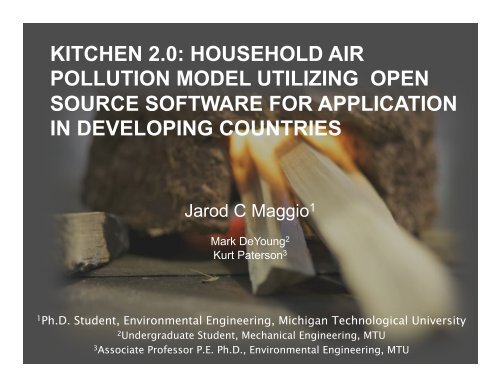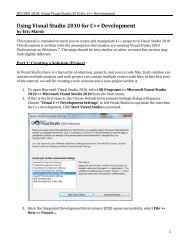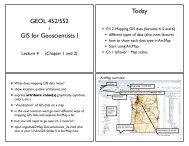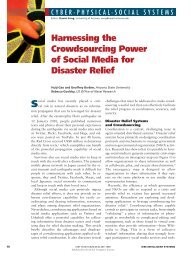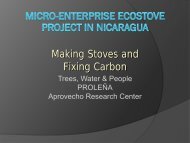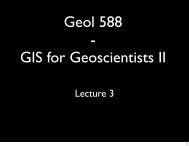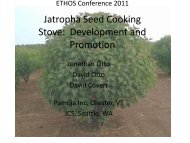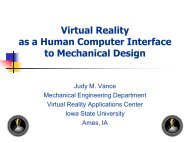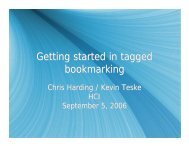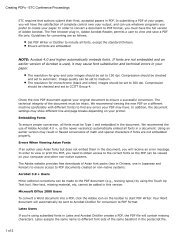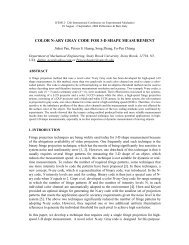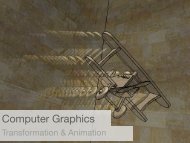Kitchen 2.0: Indoor Air Quality Modeling Utilizing Computational ...
Kitchen 2.0: Indoor Air Quality Modeling Utilizing Computational ...
Kitchen 2.0: Indoor Air Quality Modeling Utilizing Computational ...
Create successful ePaper yourself
Turn your PDF publications into a flip-book with our unique Google optimized e-Paper software.
7. Nationaler OL50. Basler Einzel-OLSamstag, 24. August 2013 - BassecourtGold-SponsorenWeisungen2<strong>2.0</strong>8.13Die OLG Basel heisst euch zum 7. Nationalen OL imneuen OL-Gelände von Bassecourt herzlich willkommen!40 kmBaselModusVeranstalterMitteldistanz OL für alle Kategorien. Lauf der Schüler- undJugendmeisterschaft der NWS.OLG Basel, www.olg-basel.ch11 kmDelémontSPM 25.08.13BassecourtNat.OL 24.08.13Laufleiter/AuskunftPresseBahnleger/KontrolleTechn. DelegierterCäsar Scherrer, Im Eichacker 41, 4112 Bättwilol-cesi@bluewin.ch, Tel. 061 733 14 25, ab 19 UhrEs gibt keinen Pressedienst. Bei Fragen sich an LL wenden.Christoph Plattner / Reto PusterlaUeli SchlatterAnreise mit öffentl. Verkehrsmitteln SBB Bahnhof Bassecourt. Weg Bahnhof -> WKZ ca. 800 m,sehr gute Verbindungen halbstündlich aus Richtung Bielund Basel (siehe sbb.ch).Privater VerkehrWettkampfzentrum (WKZ)InformationParkplätze rund um das WKZ. Fussmarsch zum WKZ bismax. 800 m, markiert ab Autobahnausfahrt Bassecourt.Halle des fêtes, 2854 Bassecourt/JU.geöffnet von 10 Uhr bis 19 Uhr.Garderoben/WC/Duschen/Kinderhort im WKZ bzw. in derNähe (siehe Skizze). Information, Sanität, Materialverkaufund Festwirtschaft im WKZ.im Wettkampfzentrum (WKZ):. Anmeldung Kat. Offen: Distanz kurz, mittel, lang. Doping-Erklärung für HE, DE, H20, D20. Bestellung Gesamtrangliste. Mutationen CHF 5.00. Kartenverkauf. Ausleihe SI-Card für Kat. Offen gratis. Fundgegenstände. Postenbeschreibungen mit IOF-Symbolen für alle Kat.liegen vor dem Start auf.Silber-SponsorenNat. OL 1/6
Overview Justification of Research Software and Methodology Calibration and Initial Findings Validation Conclusions and Next Steps
How can HAP modeling potentially helpstove developers and policy makers? A tool to predict deployment potential Help establish realistic benchmarkstandards Provide future projections andpredictions Estimates impacts of individual andlarge-scale development interventions
ProblemIdentificationMeasureImpactDevelopSolutionsModel
CONTAMMultizone IAQ and ventilation analysissoftware developed by NIST Open Source Concentrations profiles Deposition andresuspension Personal Exposurehttps://www.bfrl.nist.gov/IAQanalysis/CONTAM
Creating the modelStep 1: Building Idealization
Creating the modelStep 2: Data input (sources, sinks, ventilation,windows, doors, wind, pressure, temperature)
Creating the modelStep 3: Simulation and CFDo coupling
Creating the modelStep 4: Export record and review results
Initial Model ResultsConcentration (ug/m^3)35,00030,00025,00020,00015,00010,0005,0000Three Stone FireTSF Model ResultsTSF 3 Trial Average0 10 20 30 40 50Time (Minutes)Controlled Cooking Test SimulationMaCarty et al 2010 – Generation Rate2 Minute Running Average
Model CalibrationRealistic Schedule
Model Calibration ResultsConcentration (ug/m^3)40,00035,00030,00025,00020,00015,00010,0005,0000Model Simulation vsExperimental Average0 10 20 30 40 50Time (Minutes)Cal Model ResultsTSF 3 Trial AverageOverestimate in beginning – 17%Underestimate in the end – 12%
Model Calibration ResultsConcentration Experimental (ug/m^3)40,000 35,00035,000 30,00030,00025,00025,00020,00020,00015,00015,00010,00010,0005,0000Model Results vs Model Simulation vsExperimental data Experimental AverageCal Model ResultsTSF 3 Trial Averagey = 0.7061x + 1548.5R² = 0.8360 5,000 10 10,000 15,000 20 20,000 25,000 30 30,000 40 35,000 40,000 50ModelTime (ug/m^3) (Minutes)
Validation
ModelValidation8.5%Concentration (ug/m^3)4,5004,0003,5003,0002,5002,0001,5001,000Model ResultsTanzania Field Data50000 10 20 30 40 50 60 70 80 90 100 110 120 130Time (Minutes)
Conclusions and next steps Predicting stove performance in the fieldis hard Initial model results look good and maybe used by stove implementers House design and ventilation isimportant!Call to Action
This project is supported, in part, by the U.S. National Science Foundation, grant OISE-085405Acknowledgements Dr. Kurt Paterson, adviser The “A-Team”: Mark DeYoung,Jonathan May, Kelli Whelan, MollieRuth, Abe Peterson, Travis Wakeham U.S. EPA P3 U.S. NSF Developing GlobalScientists and EngineersThis project is supported, in part, by the U.S. National ScienceFoundation, grant OISE-0854050, and the U.S. EnvironmentalProtection Agency, grant. Any opinions, findings, conclusions orrecommendatioSU-83531501-0ns expressed in this material arethose of the investigator(s) and do not necessarily reflect theviews of the National Science Foundation or the EnvironmentalProtection Agency.
ReferencesJohnson, M., N. Lam, S. Brant, C. Gray, and D. Pennise. 2011. “<strong>Modeling</strong> <strong>Indoor</strong><strong>Air</strong> Pollution from Cookstove Emissions in Developing Countries Using aMonte Carlo Single-box Model.” Atmospheric Environment 45 (19): 3237–3243.MacCarty, N., D. Still, and D. Ogle. 2010. “Fuel Use and EmissionsPerformance of Fifty Cooking Stoves in the Laboratory and RelatedBenchmarks of Performance.” Energy for Sustainable Development 14 (3):161–171.Wang, L. L., W. S. Dols, and Q. Chen. 2010. “Using CFD Capabilities ofCONTAM 3.0 for Simulating <strong>Air</strong>flow and Contaminant Transport in andAround Buildings.” HVAC&R Research 16 (6): 749–763.Wang, L., and Q. Chen. 2007. “Validation of a Coupled multizone-CFD Programfor Building <strong>Air</strong>flow and Contaminant Transport Simulations.” HVAC&RResearch 13 (2): 267–281.
Questions???Diesel Truck3 Stone Fire
Finite Volume MethodNavier-Stokes General Equation (CFD)⎛ ∂v⎞ρ ⎜ + v •∇v⎟= −∇p+ ∇ • T + f⎝ ∂t⎠


